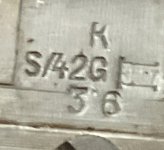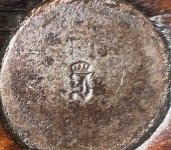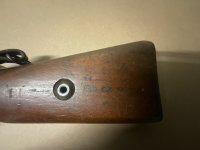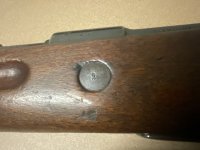Hi everyone, I'm new to the forum and new to Mauser Gewehr 98 rifles.
I recently acquired this rifle and I would appreciate it if someone could point me in the right direction to learn more about it.
What I've been able to work out is that it is Gewehr 98 from Spandau 1916, but reworked in 1935 Oberndorf (in secret?) during the rearmament in violation of the treaty of Versailles. Serial number 8736 seems to have been force matched. If you could help me decifer the markings like the things that look like cursive h h and also the barrel markings above the 7.9 mark I'd be grateful. I'm specifically wondering what the disc is with the crown above what looks like a capital "I" or, less likely a "J". Is this just a proof mark? Thanks in advance for your help.
Greetings from Australia
Daeld
PS Please let me know if this is the wrong place in the forum or if I've done anything else wrong.







I recently acquired this rifle and I would appreciate it if someone could point me in the right direction to learn more about it.
What I've been able to work out is that it is Gewehr 98 from Spandau 1916, but reworked in 1935 Oberndorf (in secret?) during the rearmament in violation of the treaty of Versailles. Serial number 8736 seems to have been force matched. If you could help me decifer the markings like the things that look like cursive h h and also the barrel markings above the 7.9 mark I'd be grateful. I'm specifically wondering what the disc is with the crown above what looks like a capital "I" or, less likely a "J". Is this just a proof mark? Thanks in advance for your help.
Greetings from Australia
Daeld
PS Please let me know if this is the wrong place in the forum or if I've done anything else wrong.









